- Home
-
Our tours
- Our tours
- Africa
- Asia
- Latin America
- North America
- Oceania
- Holiday types
-
Accommodation
- Accommodation
- Africa
- Asia
- Latin America
- North America
- Oceania
-
Practical info
- Practical info
- Africa
- Asia
- Latin America
- North America
- Oceania
- Info & contact
- Blog
Weather in Africa
22.09.2024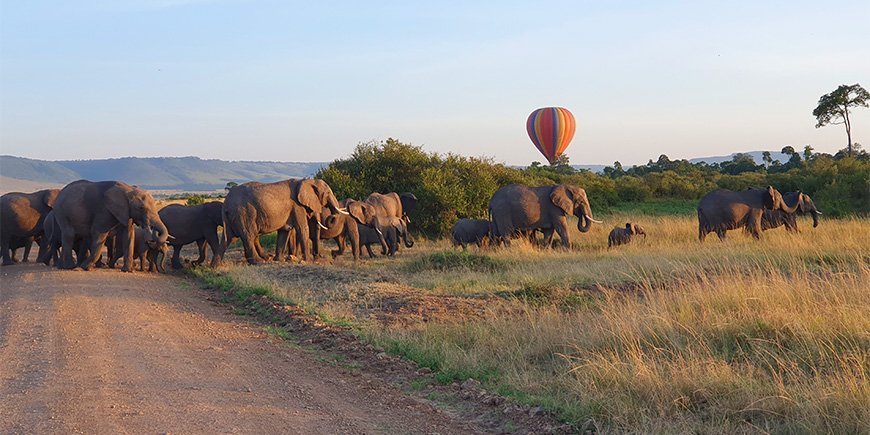
Africa is the second largest continent on the Earth.
With a size of around 30 million square kilometres, Africa offers a fascinating variety of weather and seasons that promise unique adventures across the many African countries.
But can you talk about what the weather in Africa is like at all, when it varies so much? And, if so, when is the best time to travel to Africa?
In this blog post, you will find our guide to the weather and seasons in the regions where we have tours to Africa, including in East Africa and Southern Africa.
The climate in Africa
Most of Africa has a tropical climate, as the continent is located in tropical and subtropical climate zones. This means warm temperatures and never or rarely frost and snow.
Nevertheless, the weather conditions in Africa vary greatly. It depends on where you are on the continent (north, central or south), whether you are in high or low-lying areas, and what time of year you travel. For example, temperatures will often be lower if you are in the African mountain areas or on Kilimanjaro than on the savannahs.
In some African countries, the year is divided into classic seasons with summer, winter, spring and autumn, while other countries are divided into rainy and dry seasons.
When are the rainy and dry seasons in Africa?
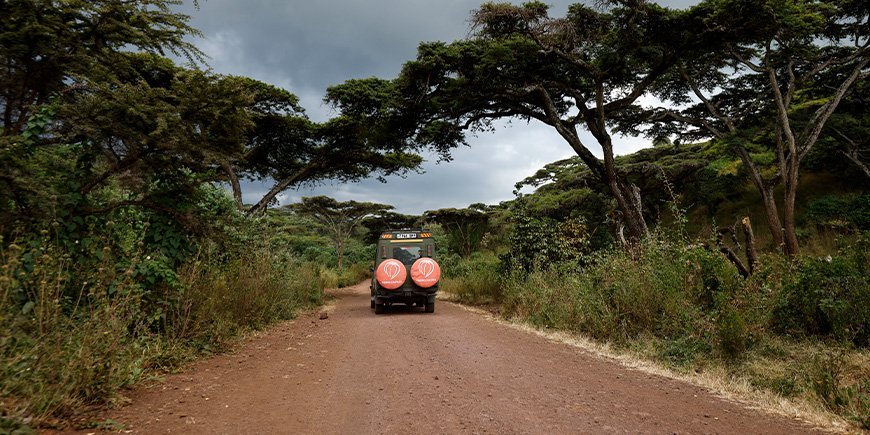
At most of our destinations in Africa, the year can be divided into dry season and rainy season. Here you get an overview of the seasons in the African countries from north to south.
Uganda:
- Rainy season: March to May and September to November
- Dry season: December to February and June to August
Kenya:
- Rainy season: March/April to May and November to December
- Dry season: January to February and June to October
Tanzania:
Northern Tanzania
(e.g. Serengeti and Ngorongoro)
- Rainy season: March to May and November to December
- Dry season: January to February and June to October
Southern Tanzania
(e.g. Nyerere and Ruaha)
- Rainy season: November to May
- Dry season: June to October
Zambia:
- Rainy season: November to March
- Dry season: April to October
Namibia
In the south at Sossusvlei
- Rainy season (summer): November to April
- Dry season (winter): May to October
Botswana:
- Rainy season: November to March
- Dry season: April to October
Madagascar:
- Rainy season (summer): November to April
- Dry season (winter): May to October
Mauritius:
- Rainy season (summer): November to April
- Dry season (winter): May to October
South Afrika
Kruger National Park:
- Rainy season: October to March
- Dry season: April to September
Cape Town:
Note that the southern part of South Africa (e.g. Cape Town) can be divided into the classic seasons we know from Europe. However, they are opposite to ours, because South Africa is located south of the Equator:
- Summer: December to February
- Autumn: March to May
- Winter: June to August
- Spring: September to November
Although you can talk about overall rainy seasons and dry seasons for areas of Africa, there may also be large variations within the same country.
Weather in Africa by month
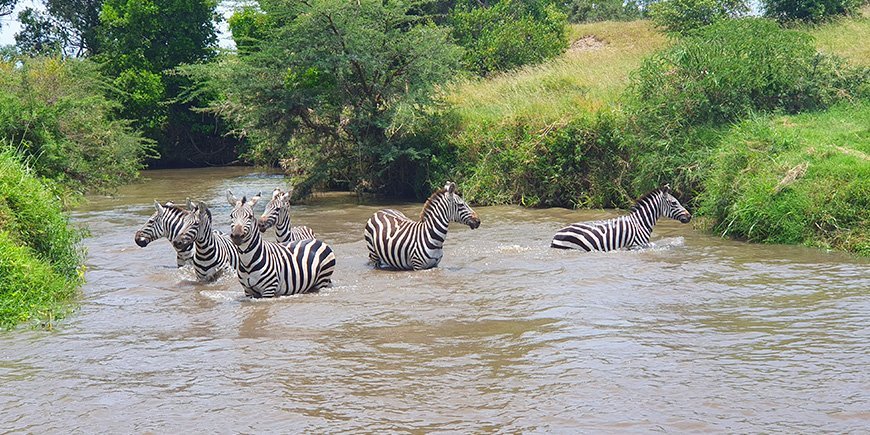
The weather in Africa is very different depending on when you travel and where you go.
Our African destinations are beautiful all year round. Below you will find a month-by-month overview of the weather at our African destinations.
January
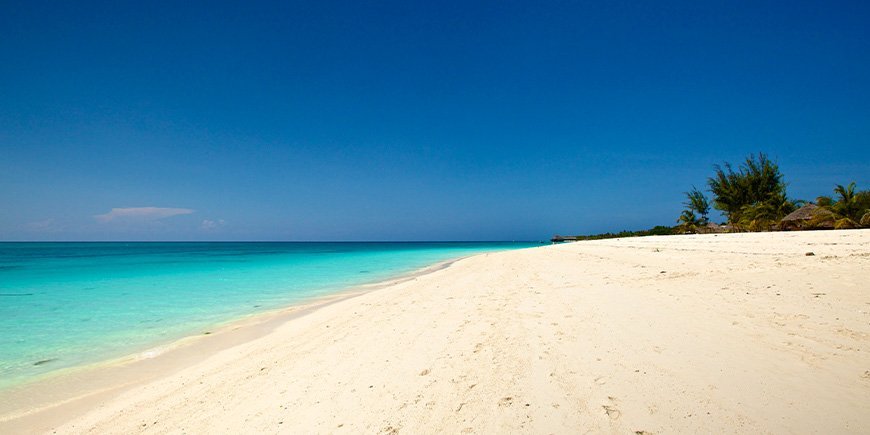
January is the dry season in most of East Africa, including Uganda, Kenya and Northern Tanzania (also on Kilimanjaro and on the paradise island of Zanzibar).
If we move further south to Southern Tanzania, Zambia (Victoria Falls) and Botswana, the rainy seasons are in full swing. In Botswana, this means, for example, warm weather with afternoon rain, but also less water in the Okavango Delta. In fact, the water in the delta comes from the rain that falls in Angola’s mountains during these months. The water takes about 6 months to reach Botswana, where it floods the area and creates the delta when we hit June.
Further east, away from the coast, where we find Madagascar and Mauritius, it is summer (November to April), which means warm weather, but also high humidity and more rain than in the winter months. January is in the middle of the cyclone season in Mauritius and Madagascar, and January is one of the months of the year with the highest quantity of rain. The rain typically falls as short heavy showers followed by dry weather.
In South Africa, it is rainy season in the north of the country, including in the Kruger area. If you move south towards Cape Town and the coasts, summer is in full swing with sunny weather and very little rain.
February
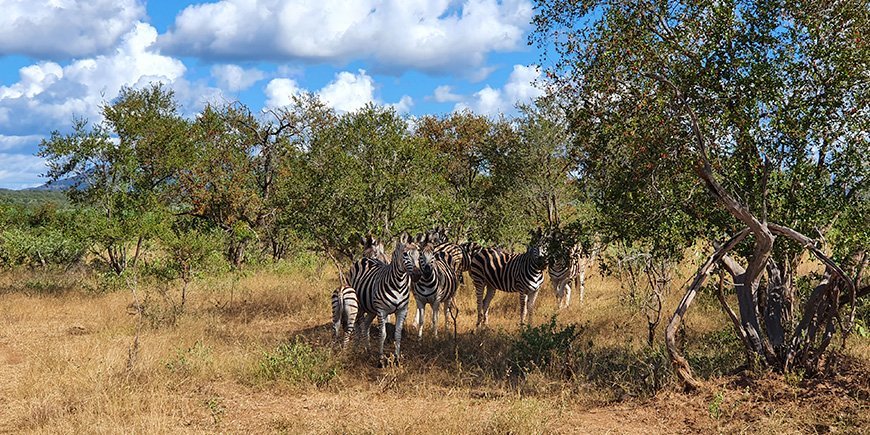
February picks up where January left off, with dry season in most of East Africa; Uganda, Kenya and in Northern Tanzania (incl. on Kilimanjaro and Zanzibar). Here you can look forward to ideal conditions for gorilla tracking in Uganda and to experiencing the wildlife in Kenya and Northern Tanzania, where there is not much rain. The wildebeest calve on the plains of Serengeti, which attracts predators looking for food.
In Southern Tanzania, Zambia (Victoria Falls) and in Botswana, the rainy season continues. At Victoria Falls, the flow in the waterfall slowly begins to increase as the rainy season progresses, but it remains slow relative to the coming months. In all three places, you will get high temperatures and rain, which typically falls as heavy showers replaced by clearing up with sun.
The summer months continue in Mauritius and Madagascar, and you can expect warm temperatures, high humidity and rain, followed by sun and more pleasant humidity. February is historically the month of the year with the highest rainfall in Mauritius.
In South Africa, the rainy season continues in Kruger National Park, where it is possible to experience beautiful nature and lots of baby animals. Cape Town offers summer weather with very little rain.
March
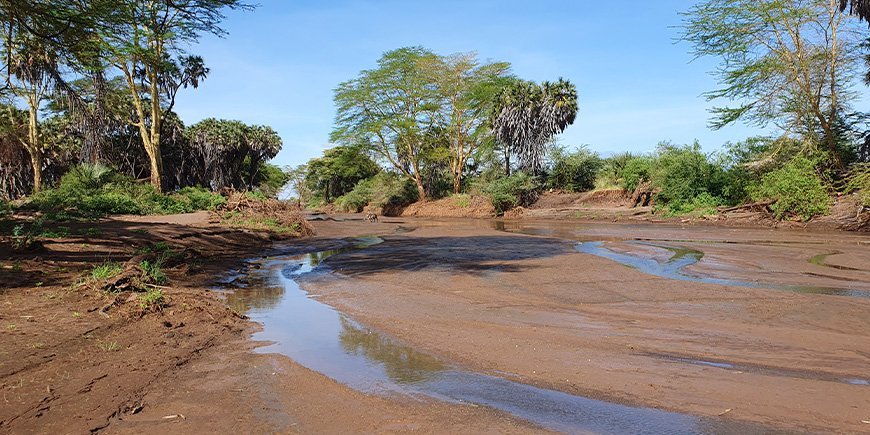
In March, there is a change in the weather in Eastern Africa. In Uganda, Kenya (Masai Mara) and Northern Tanzania, the season and weather change during the month, and the ‘long’ rainy season starts and lasts up to and including May.
In Zambia, it is still the rainy season, but as it has now been raining for a few months, the flow in the waterfall is becoming strong. In Botswana, Mauritius and Madagascar, the rainy season continues, but with less rain than in the previous months.
March marks the arrival of autumn in South Africa. In the north at Kruger National Park, there is less rainfall, and, in Cape Town, temperatures drop (although it is still warm), and the landscapes change colour to beautiful orange-red autumn shades. The Winelands is a particular highlight in the autumn season, all lush and green.
April
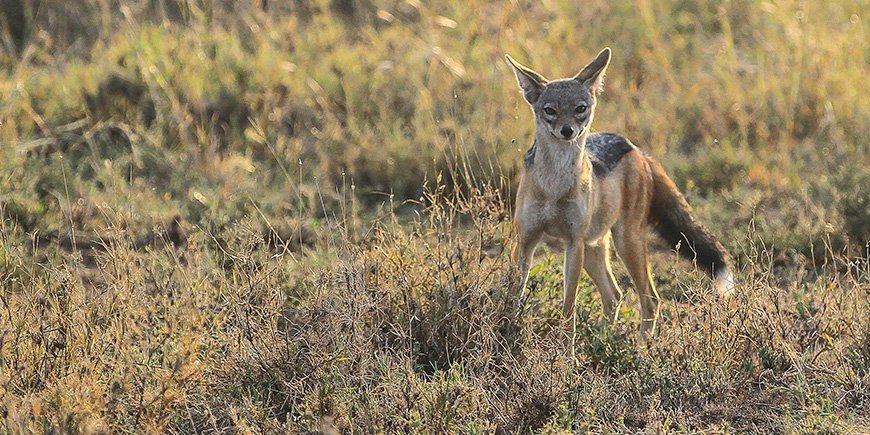
In April, the rain continues in Uganda, and the long rainy season has officially started in both Kenya and Tanzania. The rainy season is off season, which means that fewer people go on safari in Tanzania and Kenya. This also means that it is among the ‘cheapest’ months to go on safari in East Africa. The rain typically falls as massive showers that last a few hours and are followed by clearing up. If you dream of climbing Kilimanjaro, you can, in this period, consider choosing the Rongai route, which starts on the northern side of the mountain, which is often sheltered from the rain.
Further south, in Zambia and Botswana, April marks the beginning of the dry season.
In Zambia & Victoria Falls, there is good flow in the waterfall, and, for many people, it is an excellent time to visit the African wonder. Botswana’s dry season offers falling temperatures relative to the previous months, but the landscapes remain green.
In Mauritius and Madagascar, April marks the last month of summer and rainy season, and the dry season has now officially arrived at Kruger National Park in South Africa.
May
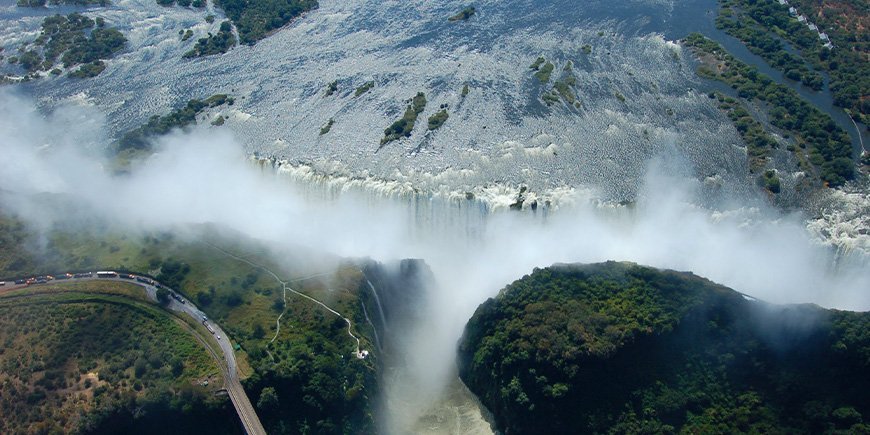
In Uganda, Kenya and Tanzania, May continues where April left off: in the middle of the rainy season. If you want to experience the wildlife on the savannah without a large number of other visitors, this is an obvious month to go on safari.
The water at Victoria Falls in Zambia is falling at full force with another month of full flow in the waterfall.
Namibia’s winter starts in May, and the month is characterised by very little to no rain and moderate temperatures. In Botswana, the dry season continues with relatively dry weather and lush surroundings.
On the island states of Mauritius and Madagascar, winter starts. This means drier weather and more pleasant temperatures than in the previous summer months.
If you travel to South Africa in May, you will arrive at the dry season in Kruger National Park. The landscapes are lush from the previous months’ rain, and the temperatures are pleasant. In Cape Town, the last month of autumn is approaching. It is the off season, and you can look forward to off-season offers in the city’s restaurants.
June
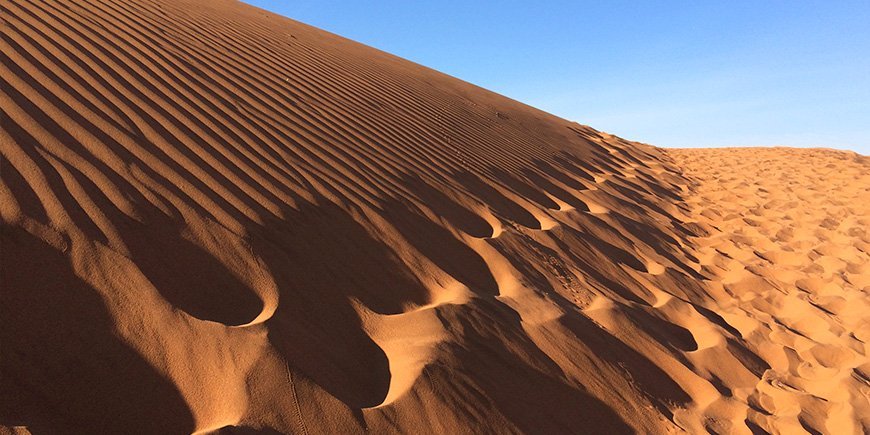
June is the start of a period with dry season at most of our destinations in Africa.
In Uganda, the second dry season starts, and you can expect blue skies, sunshine and less rain. The dry season is an ideal time to spot mountain gorillas in Bwindi Impenetrable National Park. In Kenya and Tanzania, the long dry season starts, which is also the countries’ peak seasons. The months coincide with the period in which you can experience the Great Migration river crossings of the Mara River between Masai Mara in Kenya and Serengeti in Tanzania.
At Victoria Falls in Zambia, there is still plenty of water in the waterfall, which is flanked by blue skies and hardly any rain. In Namibia and Botswana, the dry weather continues, and the Okavango Delta sees the arrival of the water that has fallen 6 months earlier in Angola’s mountains. So, despite the dry weather, there is plenty of water here. The water in the delta attracts many animals, including lots of elephants.
The dry weather of winter continues in Mauritius and Madagascar. It is warm but can get chilly in the evenings during the winter months, both in Mauritius and Madagascar.
In South Africa, the weather gets cooler (but it is still warm), and, due to the dry weather, it has become easier to spot the wildlife in Kruger National Park. If you head towards Cape Town, you can also expect cooler temperatures, although it will not get really cold. From June, it will also be possible to see whales off the coasts of southern South Africa.
July
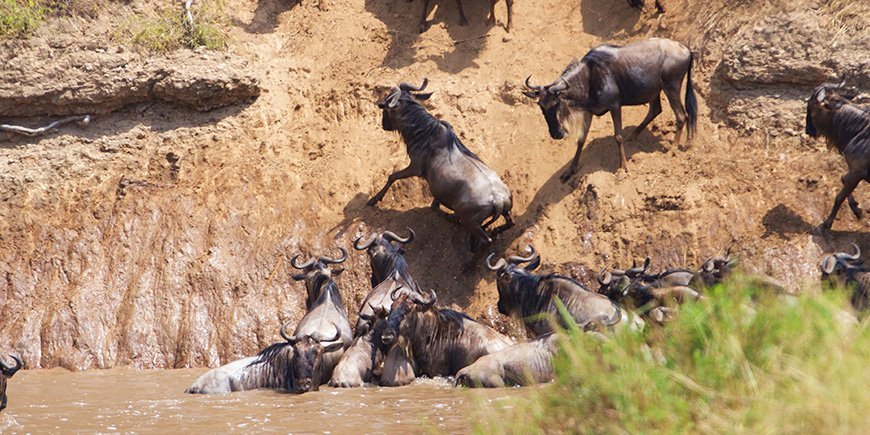
In July, the dry seasons continue from June across our destinations.
In Uganda, we are in the middle of the second dry season of the year, and this is a fantastic time to experience the beautiful mountain gorillas in the country’s rainforests.
The great migration across the Mara River in Tanzania and Kenya is still in full swing. Nights can get chilly in some places, especially if you are in higher locations, for example Serengeti.
In Zambia, the flow at Victoria Falls is still good, but it is decreasing, as it has now been several months since there has been much rainfall.
Botswana’s dry season continues, and the world’s largest inland delta continues to fill with water, attracting lots of animals.
Mauritius’ dry ‘winter’ weather continues, and the south-easterly trade winds that blow in over the island are strongest here in July and August. You may therefore want to choose beaches in the western and northern parts of the island. Madagascar also experiences dry weather with sunny days and warm weather.
The cool winter weather continues in South Africa, where the month offers fantastic safari conditions. The animals are easy to spot, and if you go further south to Cape Town, it is also possible to experience whales off the coast.
August
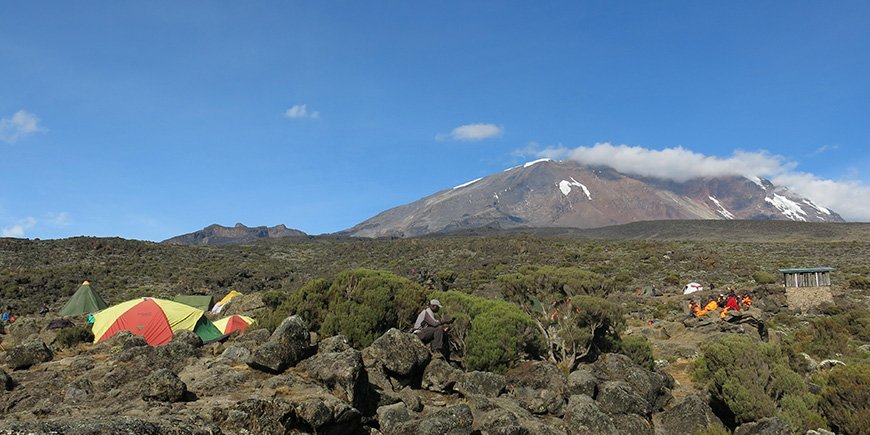
The dry season continues at our destinations in Africa, including Uganda, Kenya and Tanzania. The dry season makes it advantageous to track gorillas in Uganda, and on the border between Kenya and Tanzania – at the Mara River – it is still possible to experience the wildebeest’s river crossing.
The flow of the waterfall at Victoria Falls in Zambia remains fine, and temperatures are pleasant in Namibia’s desert landscapes. In Botswana, it is easy to spot the wildlife in the now dry and dusty landscapes, and the animals gather by the river to drink water. The Okavango Delta continues to be well stocked with both water and migratory animals seeking water to drink.
The weather is pleasant and dry in Mauritius but, due to the south-eastern trade winds, which are strongest in July and August, you may want to choose a beach in the western and northern parts of the island.
August can offer slightly cooler winter weather in South Africa, but the animals are easy to spot in Kruger National Park, and it is a great time to go on a whale safari at Cape Town.
September
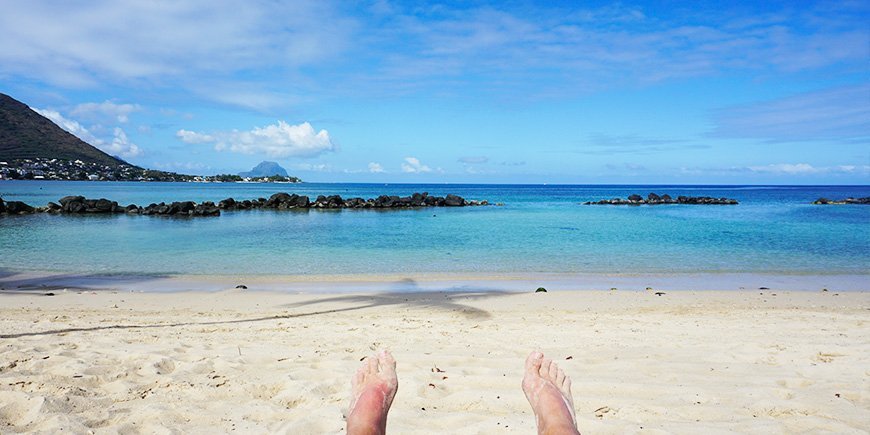
In September, the rainy season starts again in Uganda, and while gorilla and chimpanzee tracking is possible throughout the year, the trails slowly become muddy, which can make them more difficult to walk on.
In Tanzania and Kenya, the dry seasons continue for a little longer, and it is still possible to experience the Great Migration across the Mara River.
In Zambia, the flow in the waterfall is starting to decrease after months of dry weather, but Victoria Falls is still impressive. In Namibia, September is the last month of winter, and Botswana continues to offer exceptional wildlife experiences in dry weather.
Mauritius and Madagascar are experiencing dry weather and rising temperatures as we approach the last month of winter, which is in October.
In South Africa, the first month of spring has started. Temperatures are rising, and the landscapes are dry in Kruger National Park, making the animals easy to spot. In Cape Town, the wildflowers bloom, and it is high season for whale safaris, where the large whales come near the coast to breed.
October

Uganda’s rainy season continues in October, and, in the rest of East Africa, it is getting to be the last opportunity to experience the dry season at the destinations. It is also getting to be the last chance to see the many wildebeest cross the Mara River this time in their migration between Kenya and Tanzania.
At Victoria Falls in Zambia, the weather is dry and sunny, and due to the lower flow in the waterfall, you get better visibility and less haze, making the waterfall even more photogenic. In Namibia, the summer has started, and it can get very hot in places like Sossuvlei.
In Botswana, the last month of the dry season starts, and the landscapes are dry in Chobe National Park, making it easier to experience the many animals.
In Mauritius, October is the driest month of the year, and there is good visibility in the sea if you are dreaming of snorkelling. In Madagascar, lemurs typically have cubs in October.
Spring and the whale watching season continue in South Africa, and there is more rain than in the previous months, but still plenty of sunshine.
November
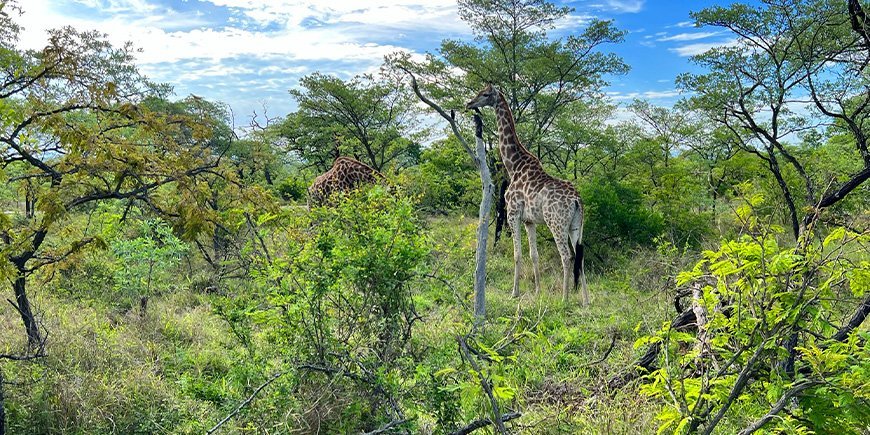
In November, there is a definite change in the weather at our destinations, and while the rainy season continues in Uganda, it starts again in Tanzania, Kenya, Zambia, Botswana and South Africa (in Kruger).
In Kenya and Northern Tanzania (for example at Serengeti), the short rainy season has started. The natural surroundings remain bare after months without rain, so it is still easy to spot the wildlife. Large herds of elephants return to Masai Mara in Kenya, and Northern Tanzania, which has some of the hottest temperatures of the year, is now once again host to the Great Migration.
Despite the rainy season having started, Victoria Falls in Zambia has the slowest flow of the year in these months. Parts of the waterfall sometimes dry out, making it possible to walk on some of the rock surfaces, where the waterfall otherwise roars for the rest of the year.
The weather in Mauritius and Madagascar changes from winter to summer, which means higher temperatures and slightly more rain than in the previous months.
In South Africa, the weather is warm and wet in Kruger National Park, but it is a beautiful season with lush landscapes. From the end of November, it is possible to experience baby animals in the national park. In Cape Town, we are approaching summer, and the last month of spring offers pleasant weather and plenty of sunshine.
December
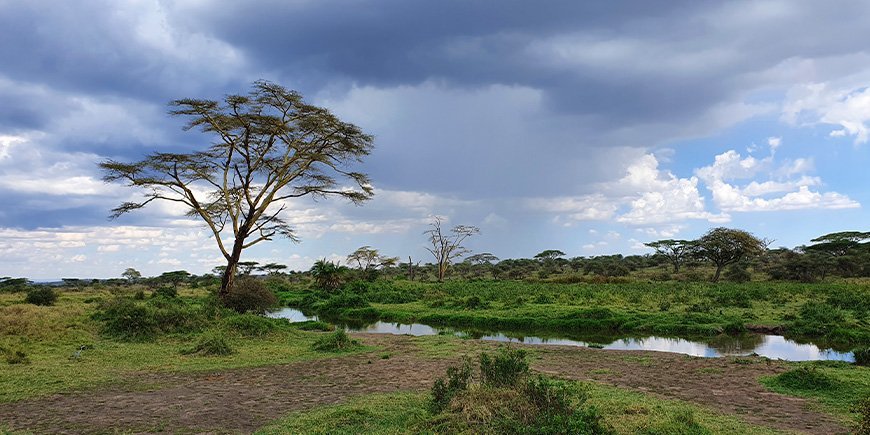
In December, the weather in Uganda changes, and the dry season starts again.
In the rest of East Africa, however, we will continue where we left off in November. The short rainy season is under way in Kenya and Northern Tanzania (and the long rainy season in Southern Tanzania).
The rainy season continues in Zambia, and even though Victoria Falls is filling up again, the flow is still slow.
The photogenic rainy season continues in Botswana, where the days are warm, and the landscapes become increasingly lush. It is easier for the wildlife to hide in the bushes, but, in turn, many baby animals are born, which attracts predators.
Namibia officially has a rainy season, but, in the desert, for example at Sossusvlei, very little rain generally falls. Temperatures here range from very hot during the day to relatively cold at night.
In Mauritius and Madagascar, summer is in full swing, which means warm temperatures, high humidity and rain, which typically falls as heavy showers followed by clearing up. December is the month with the highest rainfall in Madagascar.
In South Africa, there are sunny days and high temperatures. Where it is the rainy season in Kruger National Park, in Cape Town you can expect dry and sunny weather.
When is the best time to travel to Africa?
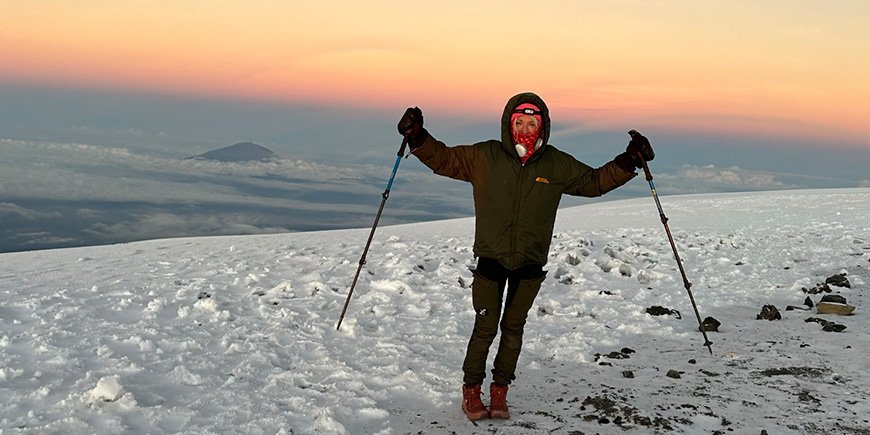
The weather in Africa is quirky, and it is difficult to say anything unambiguous about when you should go to Africa, because it varies a lot depending on which part of the continent you visit.
However, no matter when you travel, you can expect incredible travel experiences in Africa.
Need help finding the best time to go on a safari in Africa? Or travel to a specific country? Contact our travel specialists. They are ready to help you organise the tour of a lifetime.
TourCompass – From tourist to traveller
